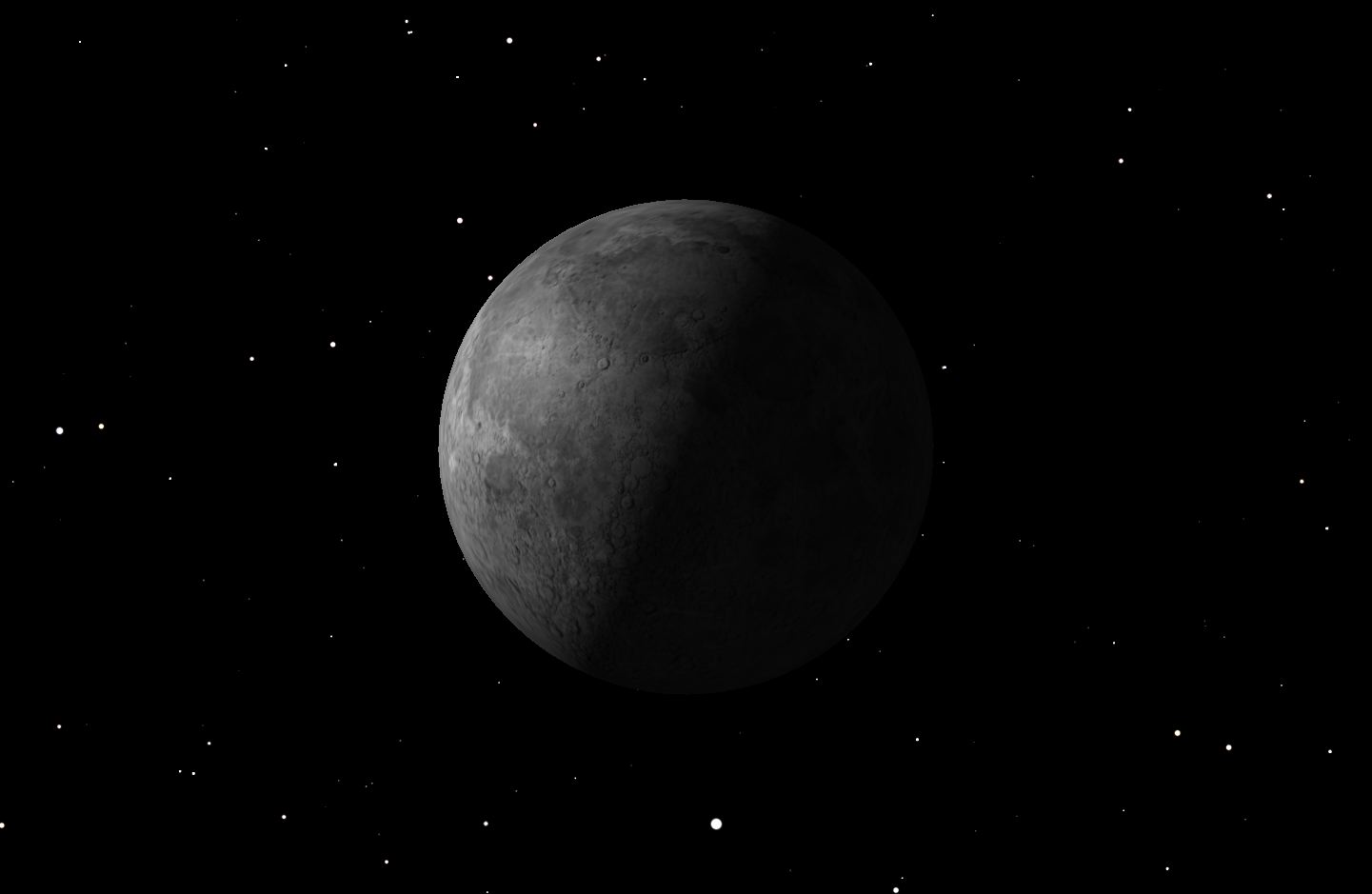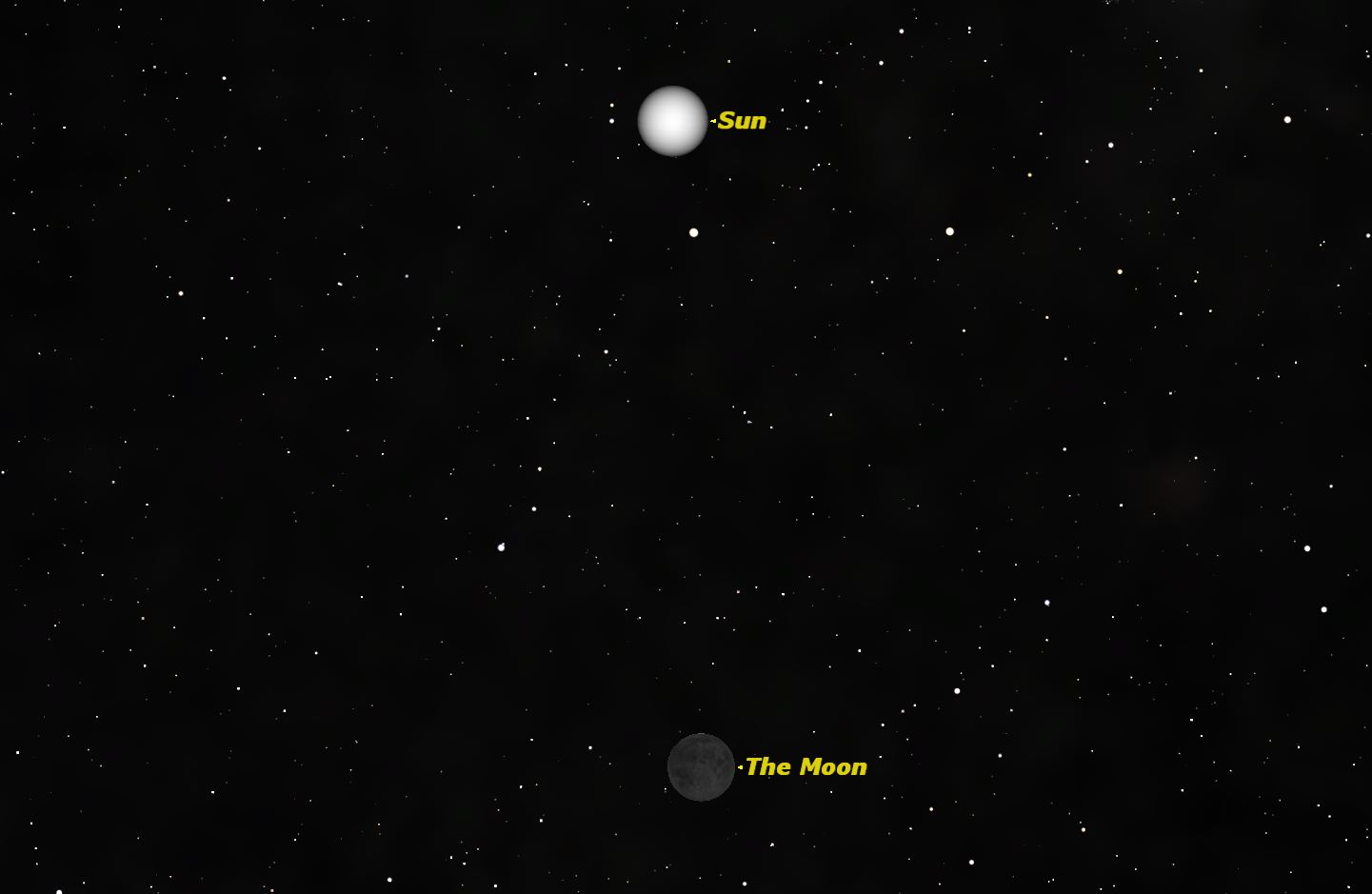 | |||||||||||||||||||||||||||||||||||||||||||||||
| For education orders please call 1-877-290-8256. Welcome to the Third Week of June Featured Article! Solstices and Seasons Geoff Gaherty, Starry Night EducationNext Saturday at 6:51 a.m. EDT, the Sun will each one of its four major way stations on its annual trip around the Sun, the Summer Solstice. 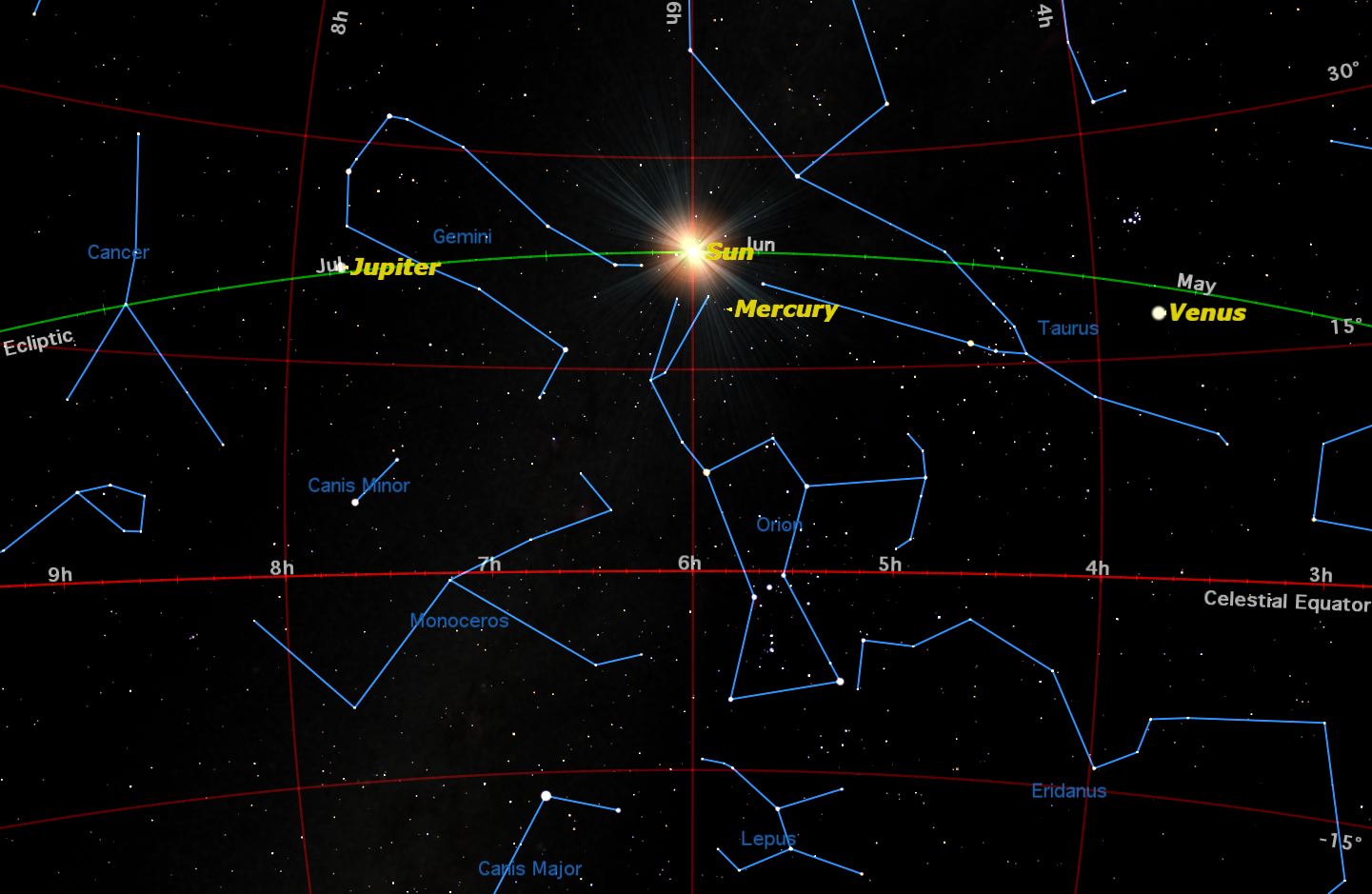 The Sun reaches its northernmost point in the sky on Saturday, June 21, at 6:51 a.m. EDT. This is called the Summer Solstice in the Northern Hemisphere, and the Winter Solstice in the Southern Hemisphere. Credit: Starry Night software. Because of the Earth’s tilt of 23.4 degrees to its orbit, the noon Sun appears to rise and fall in our sky over the course of the year. The two extremes of this apparent movement are called the solstices, from the Latin for "Sun stationary." On June 21, the Sun reaches its highest northern declination and seems to pause briefly before beginning to move southward again. In the Northern Hemisphere, this marks the longest day of the year and the middle of summer, so we call it the Summer Solstice. In the Southern Hemisphere, this is the shortest day of the year and the middle of winter, so is called the Winter Solstice. The situation is reversed on December 21, when the Sun is at its southernmost declination. We northerners call this Winter Solstice, and southerners call it Summer Solstice. If the middle of summer falls on June 21, why is it that the warmest days are usually a month or two later? That’s because it takes the Earth a while to warm up, and similarly to cool down in winter. All of Earth’s seasons lag about 6 weeks behind the exact dates dictated by the geometry of Earth’s orbit. Computer software like Starry Night allows us to see the solstice in a way we could never witness it with our eyes. We can darken the sky so that the stars and planets are visible at the same time as the Sun. The stars, of course, are far more distant than the Sun. In our chart of solstice the celestial equator is marked in red. The numbers mark hours of right ascension, the celestial equivalent of longitude on the Earth’s surface. 0 hours is the vernal equinox, the point where the Sun’s path, the ecliptic, crosses the celestial equator going north. At summer solstice, the Sun is at a right ascension of 6 hours, as shown on the chart. Mintaka, the uppermost star in Orion’s Belt, is very close to the celestial equator. The green line marks the ecliptic, the Sun’s path across the celestial sphere. The Sun, moving from right to left across the chart, is just about to leave Taurus and enter Gemini. It sits right over the club which Orion holds on high. The planet Mercury appears close to the Sun in the sky, but that is just an effect of perspective. In fact Mercury is about half way between us and the Sun at present, having been at its farthest east of the Sun on May 25, and now moving to its farthest west on July 12. Mercury is moving from left to right in front of the Sun. Jupiter and Venus appear symmetrically placed on either side of the Sun, but again that is deceptive. Both are on the far side of the Sun, but Jupiter appears to be moving from left to right while Venus is moving from right to left. Jupiter will pass behind the Sun on July 24, while Venus will pass behind, moving in the opposite direction, on October 25. The differences in speed and direction are partly because Venus, in an orbit close to the Sun, moves a lot faster than Jupiter, in an orbit far from the Sun, but mostly because we are observing them from a rapidly moving platform, the planet Earth. The Earth’s movement often makes the planets appear to slow down and reverse directions, known as retrograde motion. This is an optical illusion caused by our movement, just as the scenery seems to move backward as seen from a rapidly moving automobile. Coming Events Here is a rundown of events coming soon to a sky near you!Thursday, June 19, 2:39 p.m. EDT
Observing Highlights Tuesday, June 3, 2:08–3:44 p.m. EDTTriple shadow transit on Jupiter The shadows of Europa, Ganymede and Callisto will play on Jupiter’s cloud deck. Best observed from eastern Europe and the Middle East. 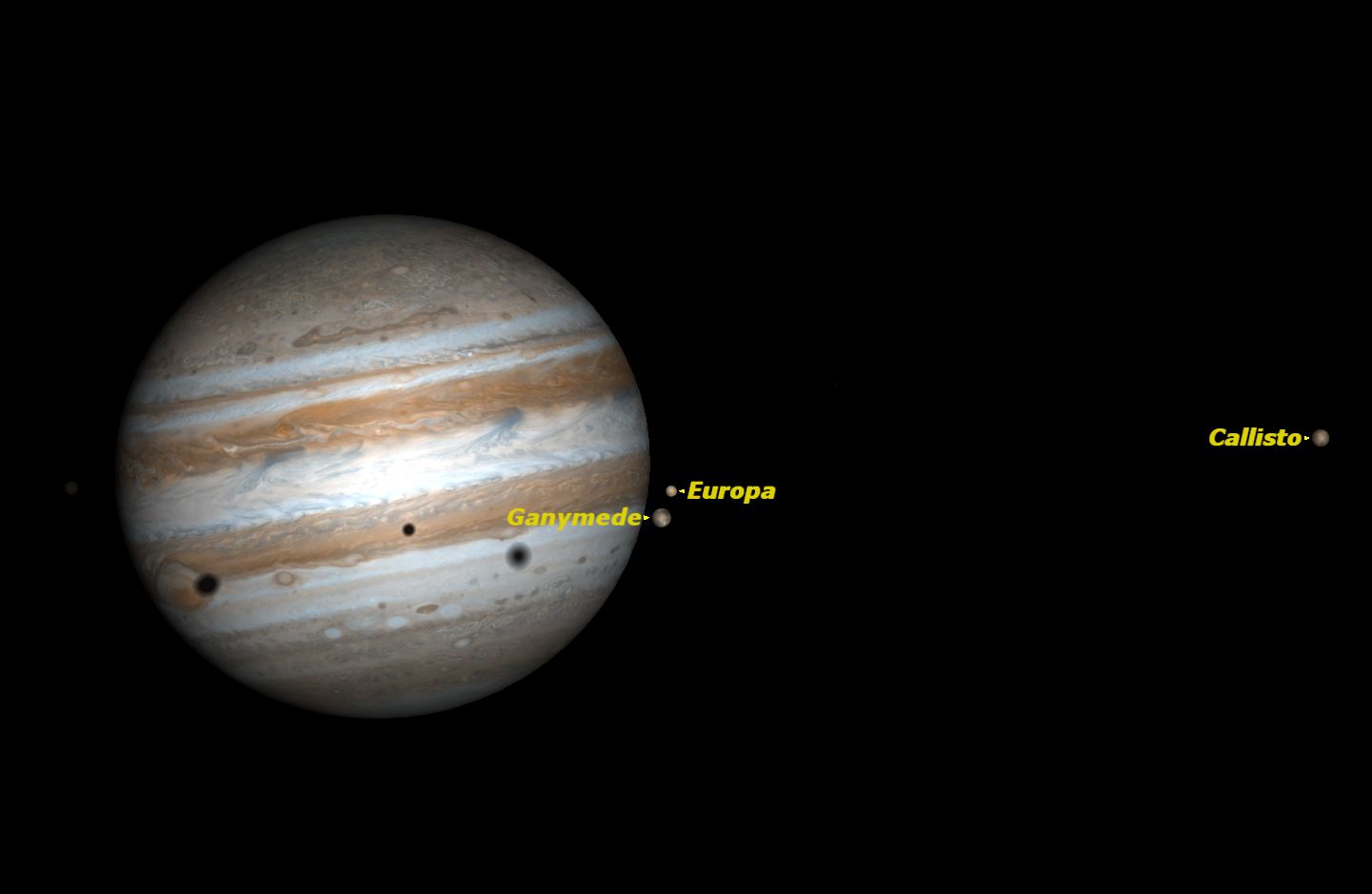
Saturday, June 7, 9 p.m. EDT Mars and the Moon The waxing gibbous Moon will pass just south of the planet Mars. 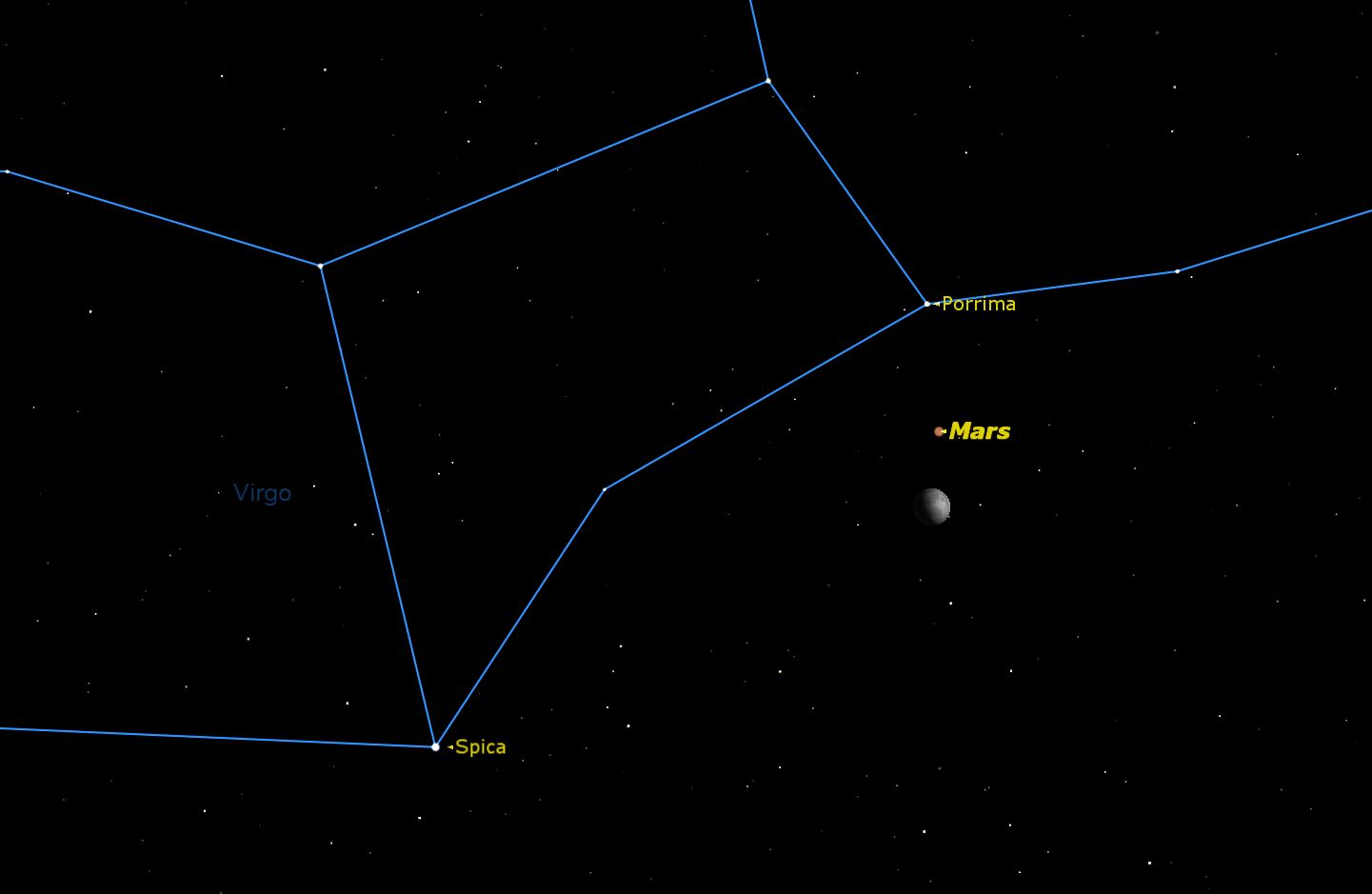
Sunday, June 8, dusk Spica and the Moon The Moon will pass just north of the bright star Spica in Virgo. 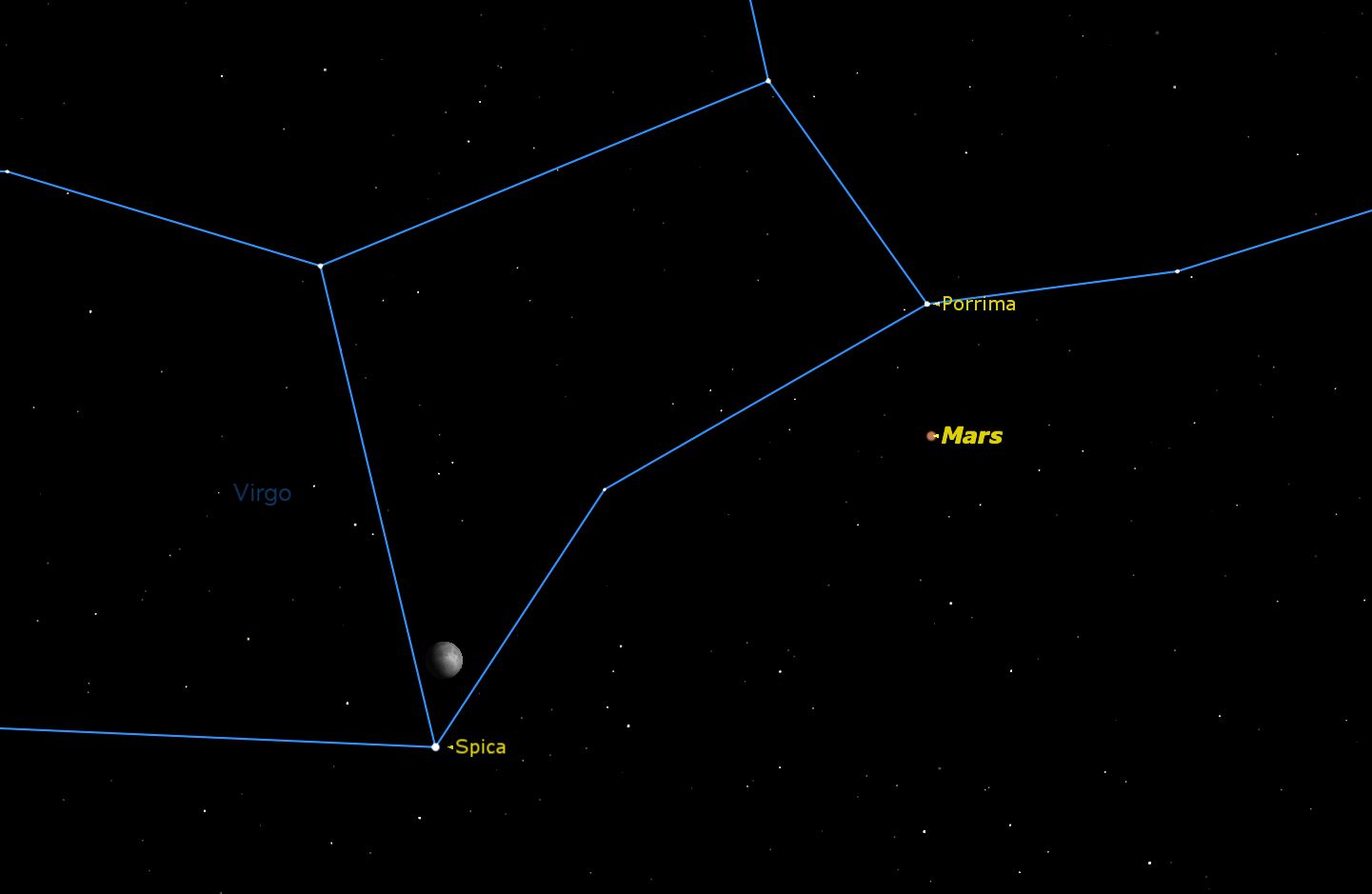
Tuesday, June 10, dusk Saturn and the Moon The Moon will pass just south of the planet Saturn. The Moon will occult Saturn as seen from southern South Africa (as seen here) and parts of the Southern Ocean. 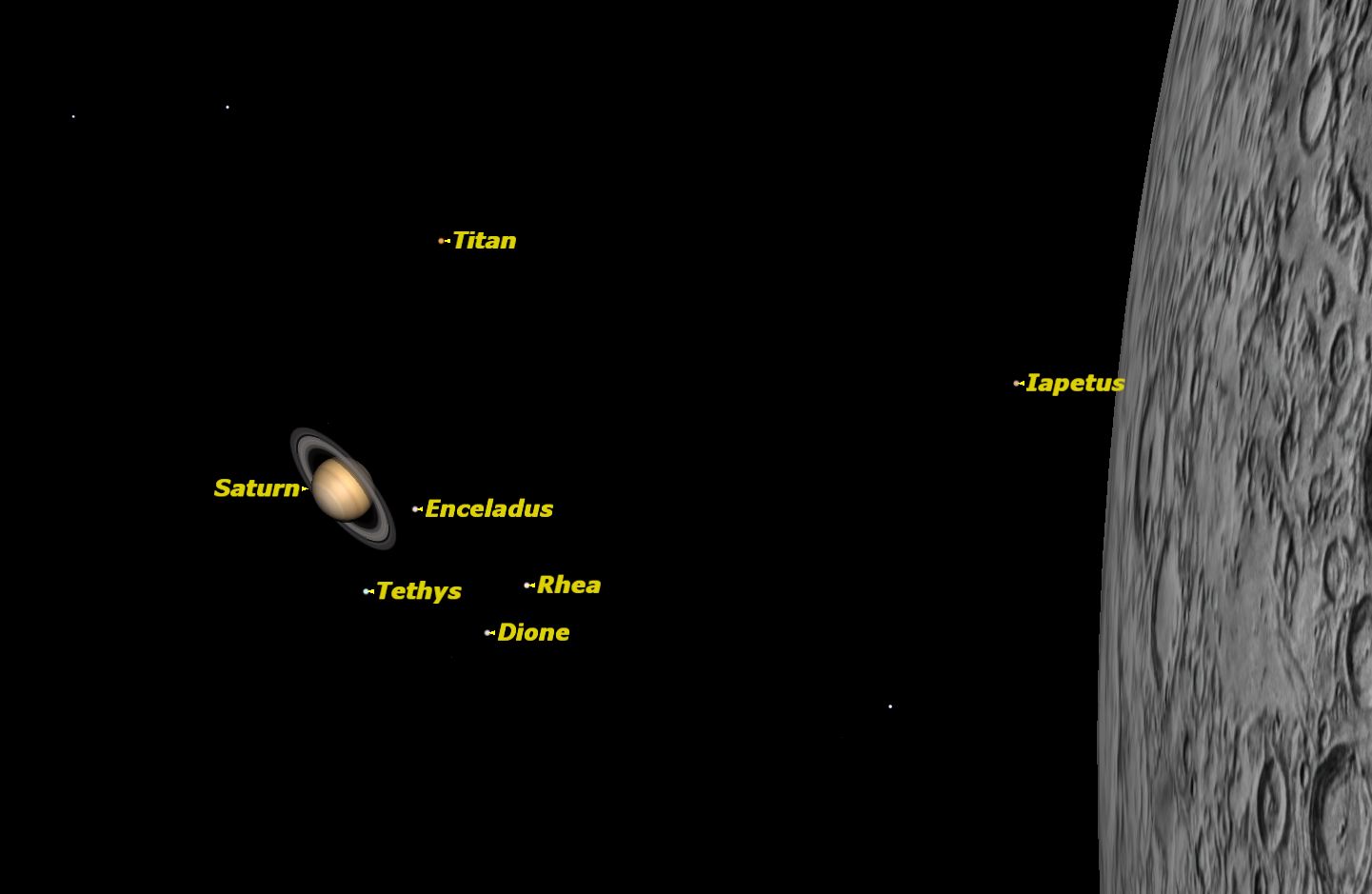
Tuesday, June 10, 6:07–6:28 p.m. EDT Double shadow transit on Jupiter The shadows of Europa and Ganymede will cross Jupiter’s cloud deck simultaneously. Best observed from central South America 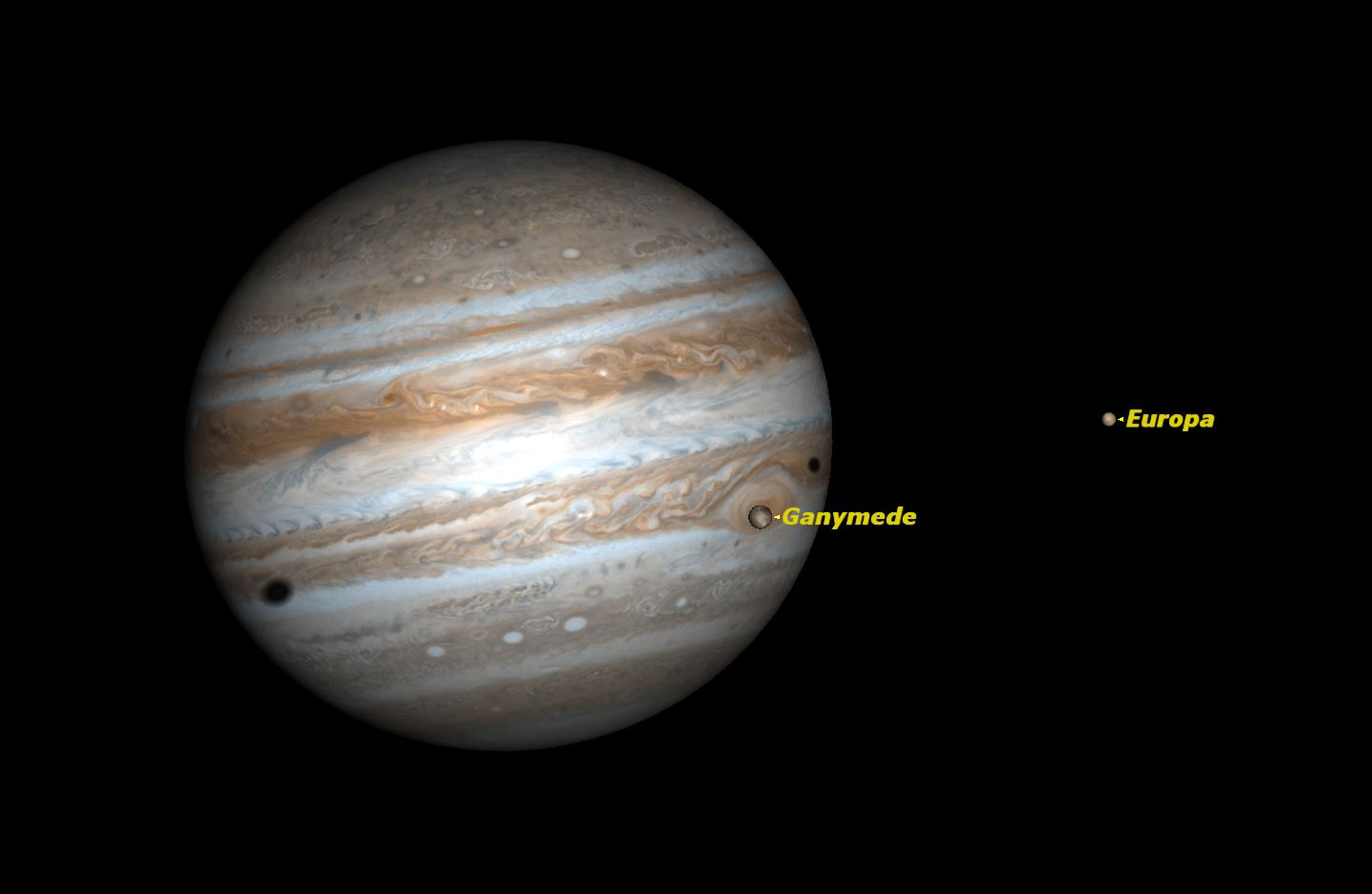
Saturday, June 21, 6:51 a.m. EDT Solstice The beginning of summer in the Northern Hemisphere, and winter in the Southern Hemisphere. 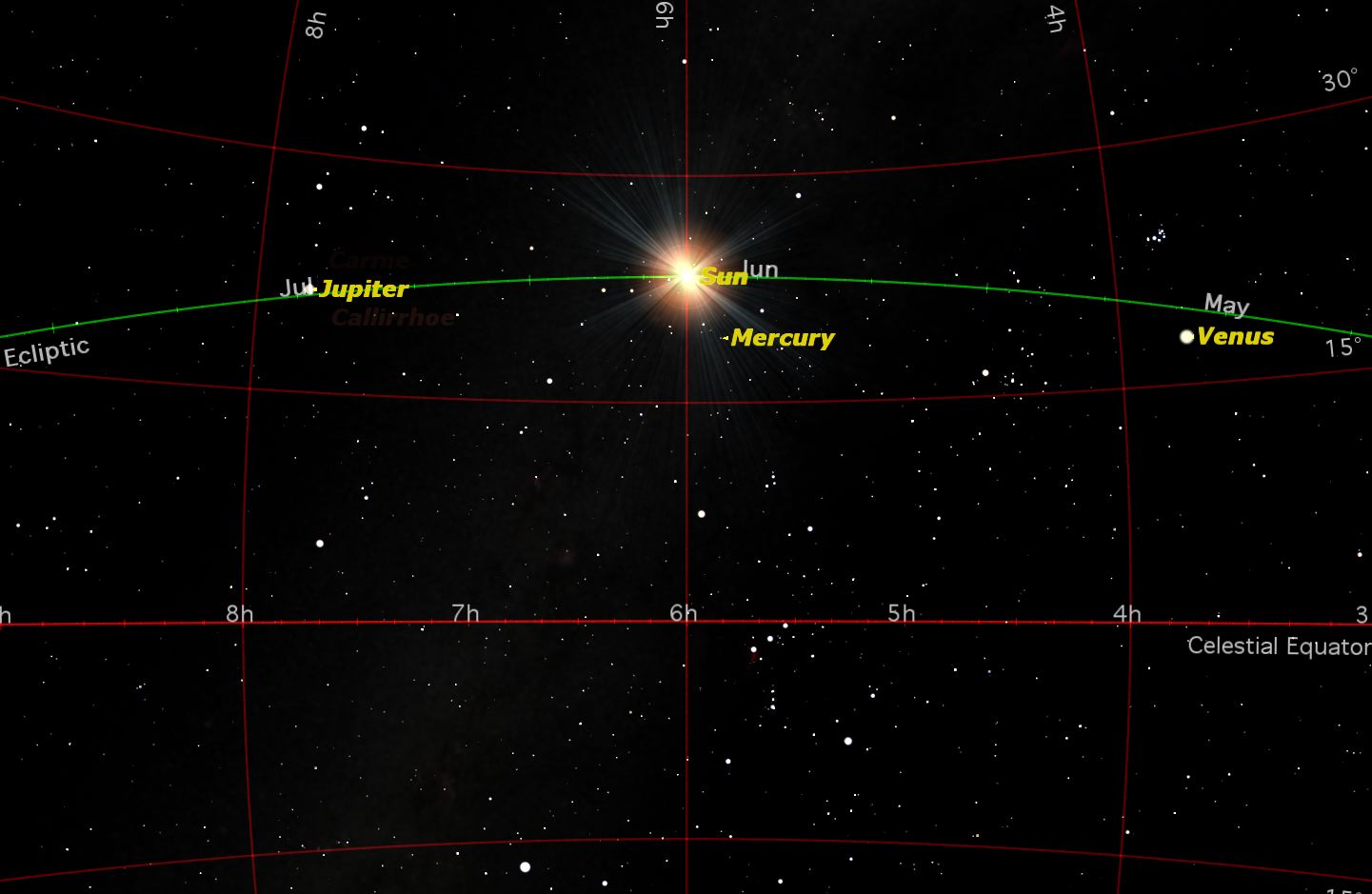
Tuesday, June 24, dawn Venus and the Moon The slender crescent Moon will pass just below the planet Venus. 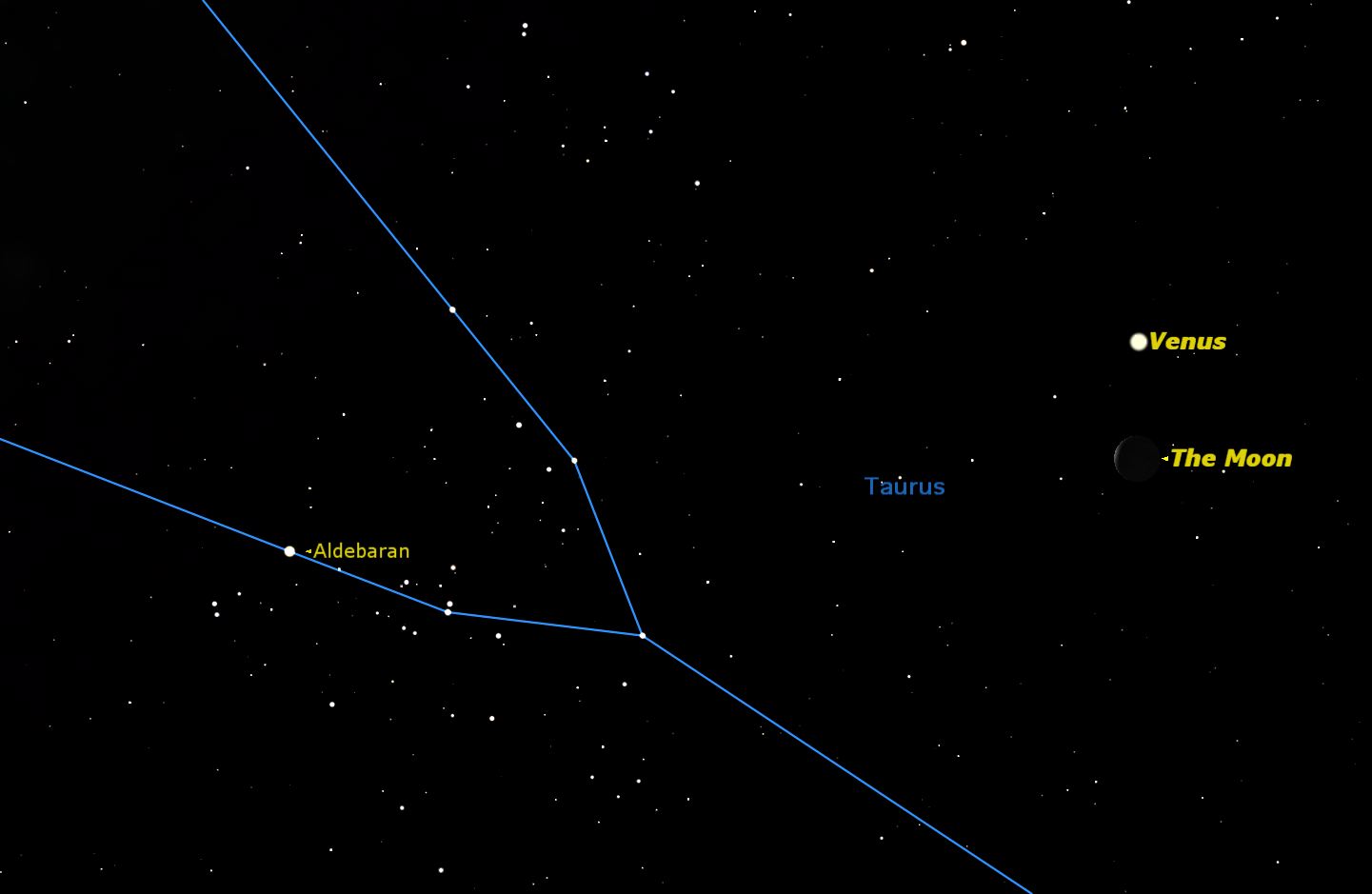
Wednesday, June 25, dawn Aldebaran and the Moon The Moon passes just north of the bright star Aldebaran in Taurus. 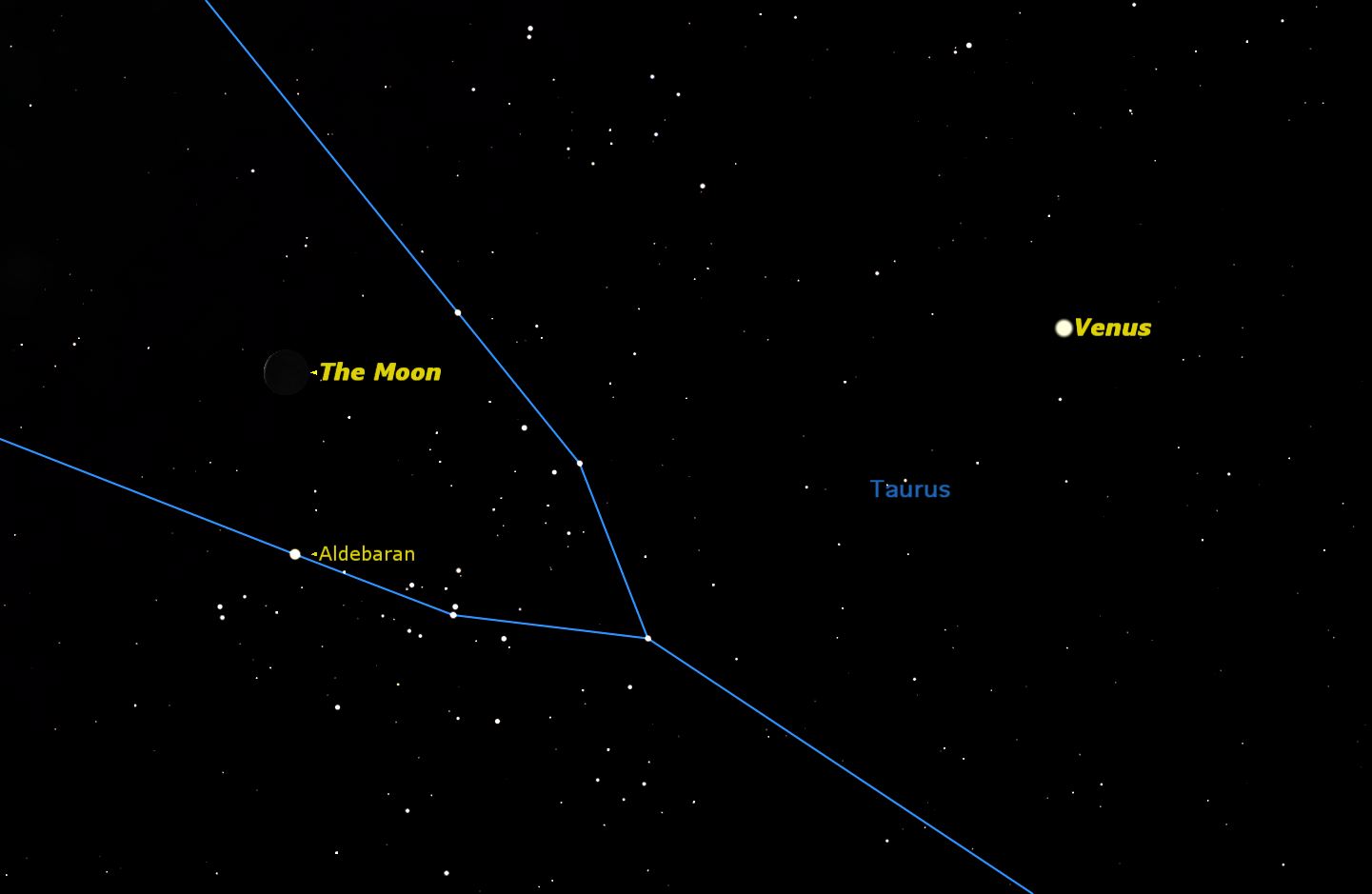
Planets Mercury sets just after the Sun for the first two weeks of the month, but will be too close to the Sun to be seen for the last two weeks.  Venus is low in the eastern sky, rising just before the Sun.
Venus is low in the eastern sky, rising just before the Sun.
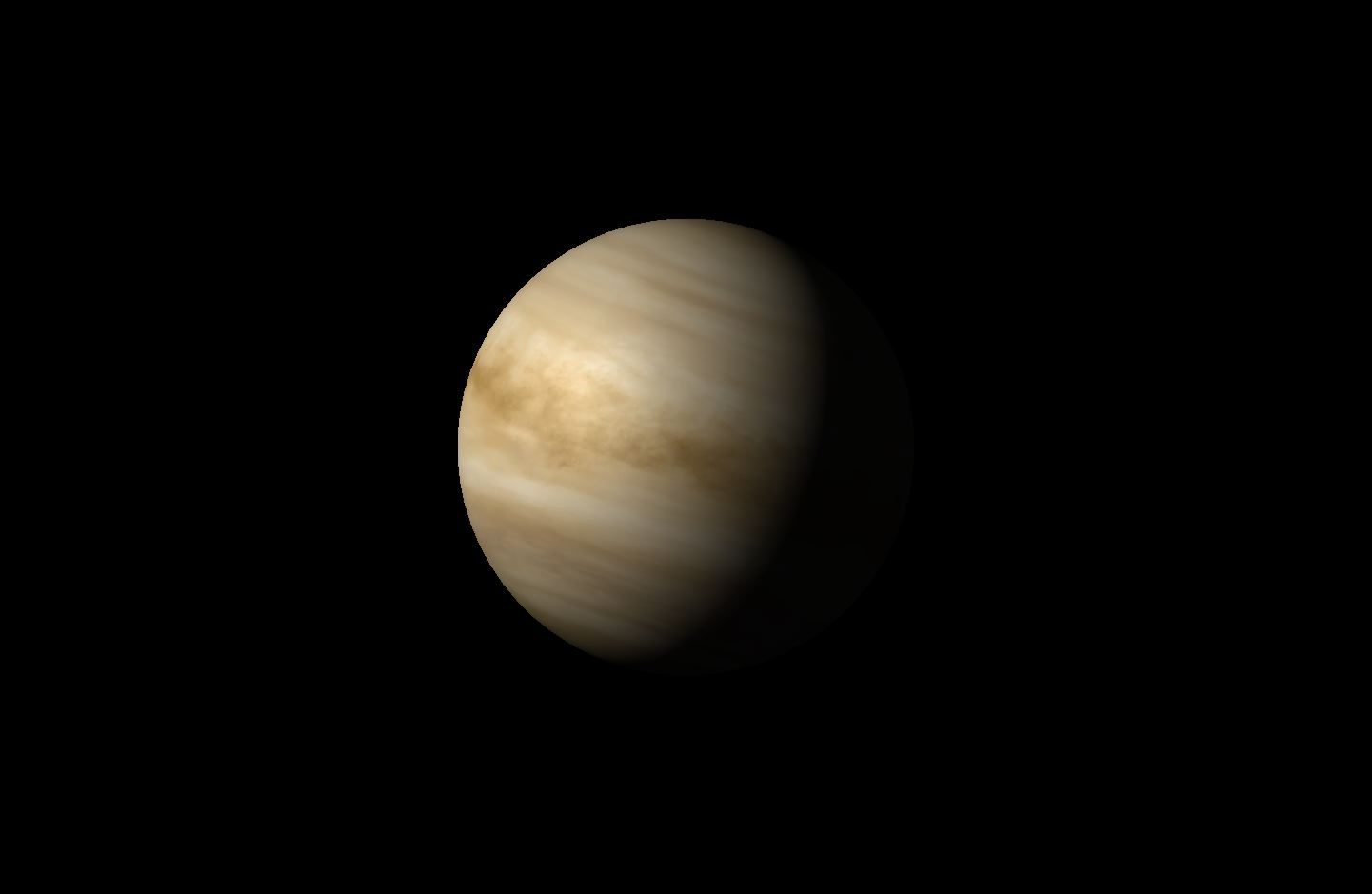 Mars is now fading rapidly in brightness as it moves towards the far side of the Sun.
Mars is now fading rapidly in brightness as it moves towards the far side of the Sun.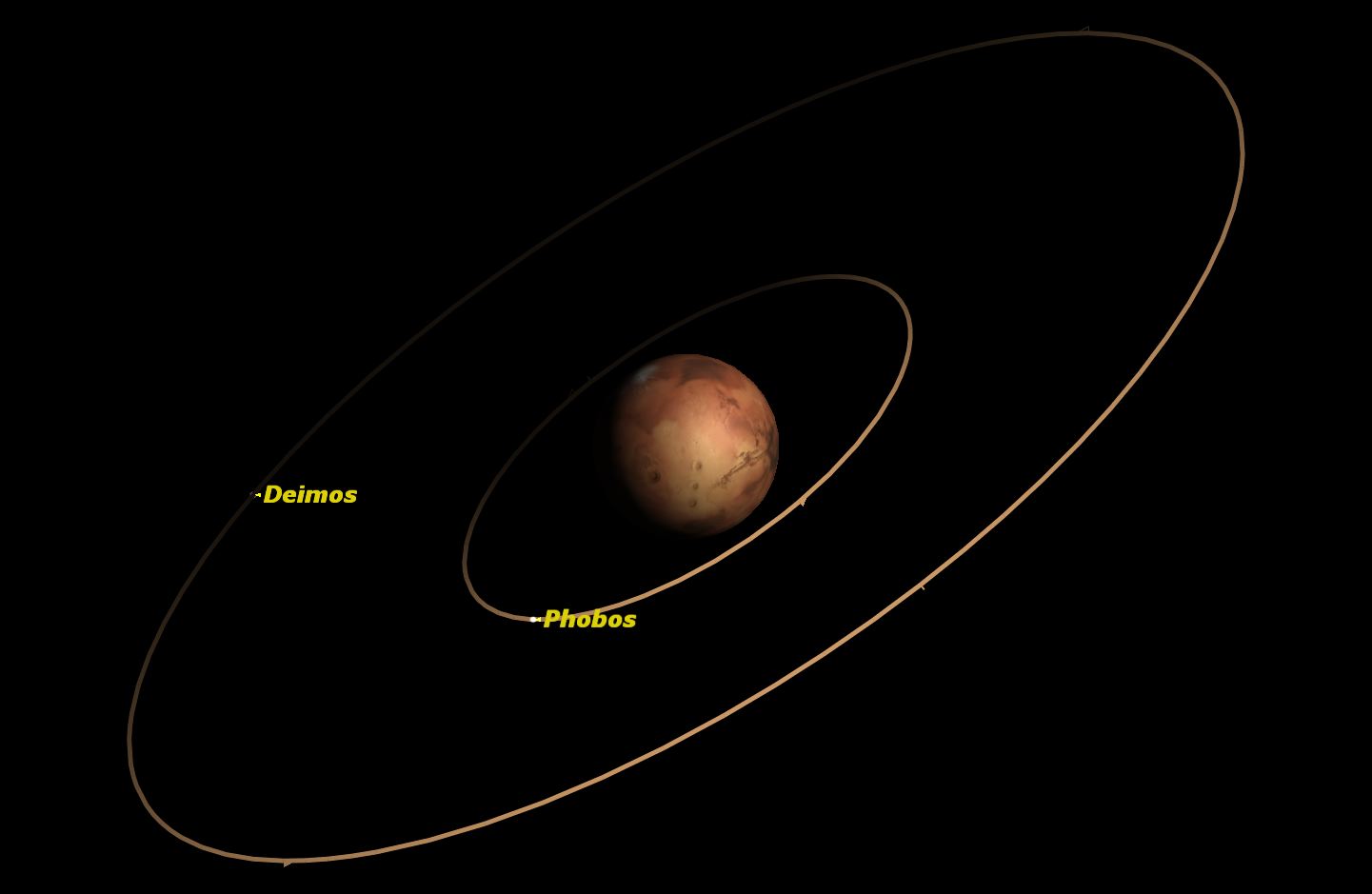 Jupiter is now low in the western sky at sunset, and is lost behind the Sun at the end of the month.
Jupiter is now low in the western sky at sunset, and is lost behind the Sun at the end of the month.
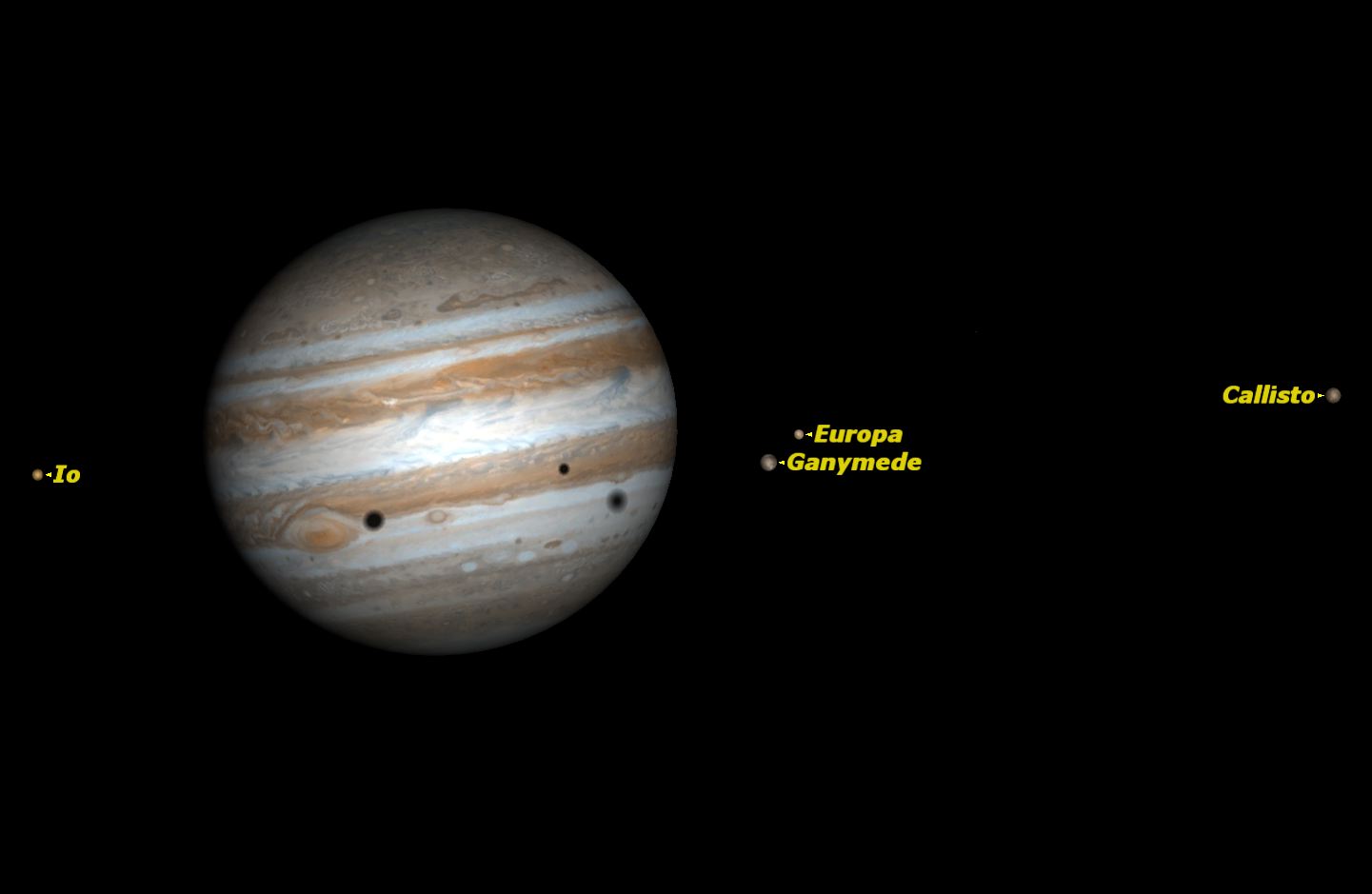 Saturn, in Libra, is well placed in the southern sky for most of the night.
Saturn, in Libra, is well placed in the southern sky for most of the night.
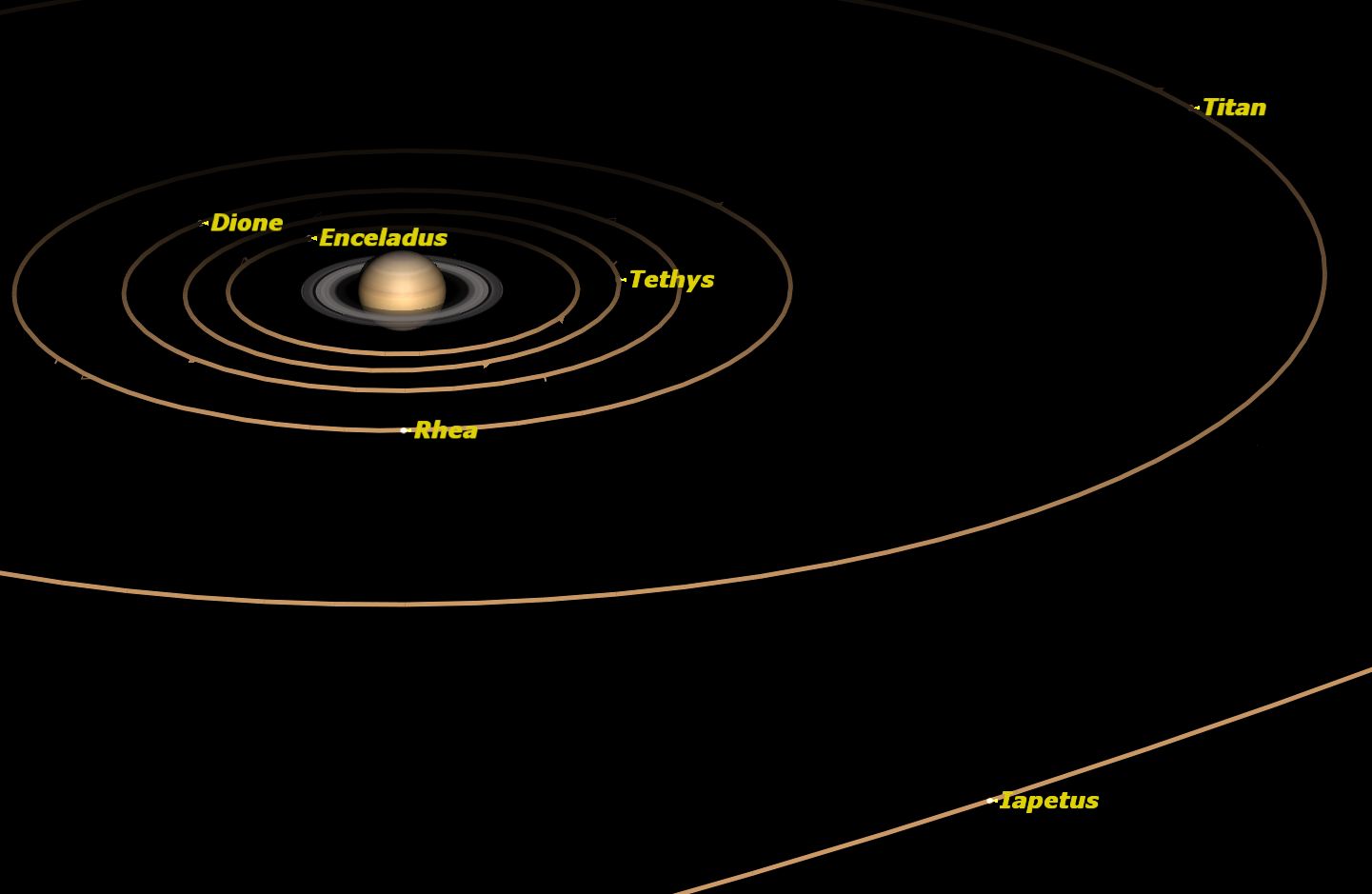 Uranus is located in the constellation Pisces, rising just before the Sun.
Uranus is located in the constellation Pisces, rising just before the Sun.
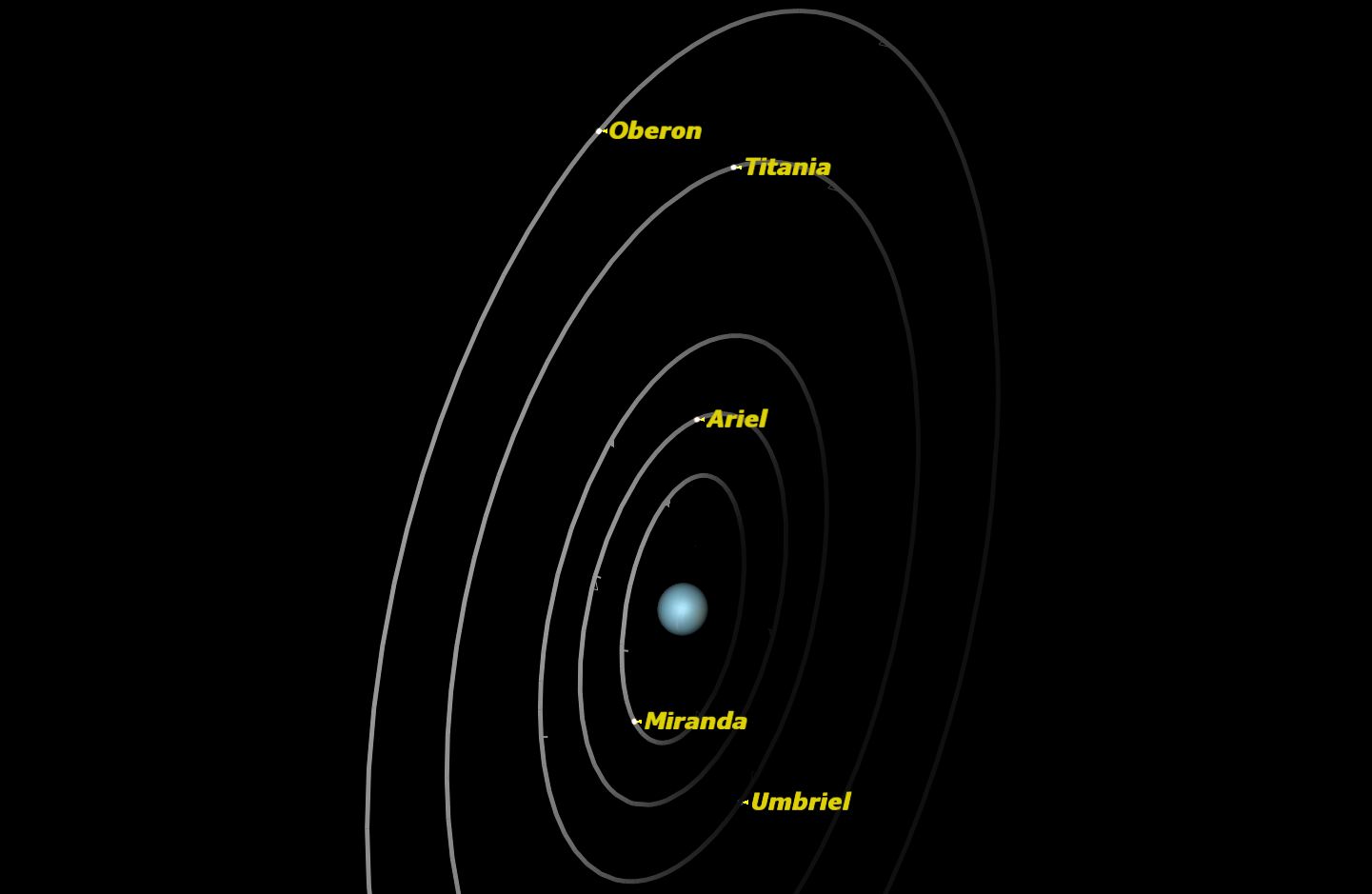 Neptune is in Aquarius all month, rising after midnight.
Neptune is in Aquarius all month, rising after midnight.
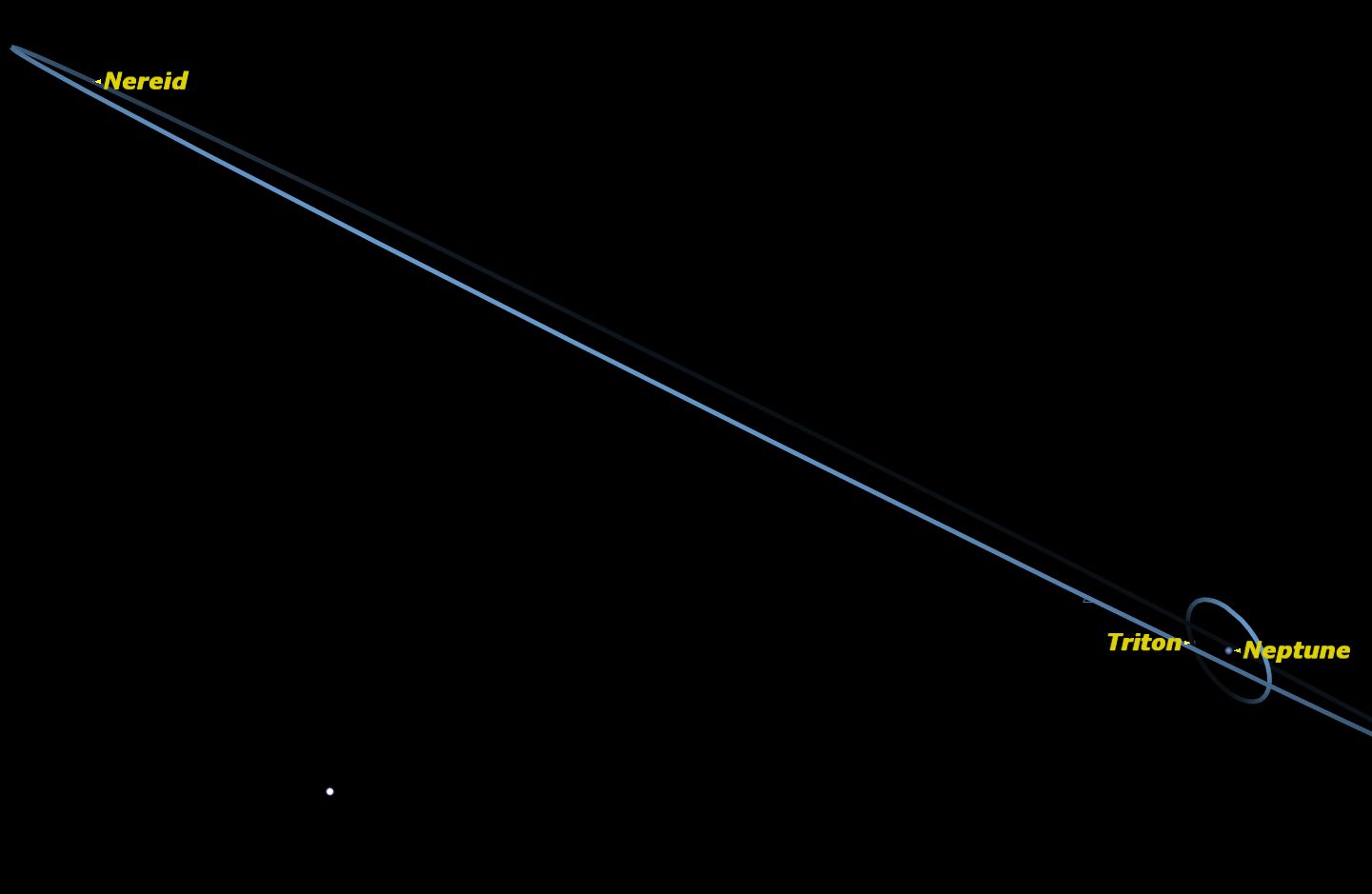
|
| ||||||||||||||||||||||||||||||||||||||||||||||
© 2016 Simulation Curriculum Corp. All Rights Reserved. |
|||||||||||||||||||||||||||||||||||||||||||||||
